The Oriental Cuckoo (Cuculus optatus) is an enchanting avian species, captivating ornithologists and bird enthusiasts with its unique characteristics.
This migratory bird, belonging to the Cuculidae family, resides across vast East Asian regions.
Recognized for its exquisite plumage, the Oriental Cuckoo exhibits sexual dimorphism, with males showcasing a striking combination of dark, glossy blue and white feathers. At the same time, females display a more subdued brown-and-white palette.
Renowned for its extraordinary migration prowess, this species undertakes an arduous journey covering thousands of kilometers annually, navigating diverse landscapes.
The Oriental Cuckoo’s distinctive call resonates through its habitats, adding a melodic note to its graced ecosystems.
How to Identify Oriental Cuckoo?
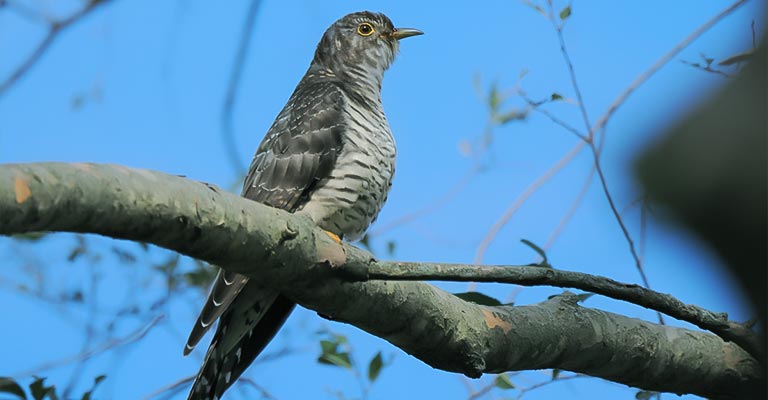
The Oriental Cuckoo (Cuculus saturatus) is a migratory bird species found across a vast range in Asia, renowned for its subtle yet distinctive features.
Identifying this bird requires attention to various physical characteristics, behaviors, and vocalizations. Here are eight key points to assist in the accurate identification of the Oriental Cuckoo:
Size and Shape
The Oriental Cuckoo exhibits a medium-sized build with a sleek and slender appearance. It typically measures between 27 to 33 centimeters in length, featuring a long tail that contributes to its overall streamlined silhouette.
Observing the bird’s size and proportions can be the first step in differentiating it from other avian species.
Plumage Variation
The Oriental Cuckoo displays distinct seasonal plumage variations. During the breeding season, males often exhibit a striking contrast between the upperparts, predominantly gray with a slate-blue tint, and the underparts, white with dark barring.
Conversely, females may have a more subdued coloration with brownish-gray upperparts and a pale underside.
Distinctive Markings
Look for the unique markings on the Oriental Cuckoo’s plumage. A distinguishing feature is the presence of prominent barring on the breast and belly, adding a textured pattern to its overall appearance.
This can serve as a crucial identifier, especially when observing the bird at a distance.
Facial Features
Pay attention to the facial features of the Oriental Cuckoo. It typically sports a contrasting facial pattern, with a dark eye stripe extending through the eye and a white or pale patch below it.
This distinctive facial arrangement aids in the accurate recognition of this cuckoo species.
Vocalizations
The Oriental Cuckoo communicates through a variety of calls. During the breeding season, the male produces a repetitive and far-carrying two-note whistle, often described as “coo-coo.”
Familiarizing oneself with these vocalizations can be a valuable tool for identification, especially in areas where visual confirmation may be challenging.
Association with Host Species
The Oriental Cuckoo is known for its brood parasitism, laying eggs in the nests of other bird species. Observing its interaction with potential host species, such as warblers and thrushes, can contribute to identification efforts.
Additionally, awareness of the cuckoo’s nesting behavior can enhance understanding of its presence in a given area.
Accurate identification of the Oriental Cuckoo involves a holistic approach, considering physical characteristics, vocalizations, behavior, and habitat preferences.
By paying attention to these eight key points, birdwatchers and enthusiasts can enhance their ability to distinguish this captivating migratory species in the diverse landscapes of Asia.
Taxonomy of Oriental Cuckoo
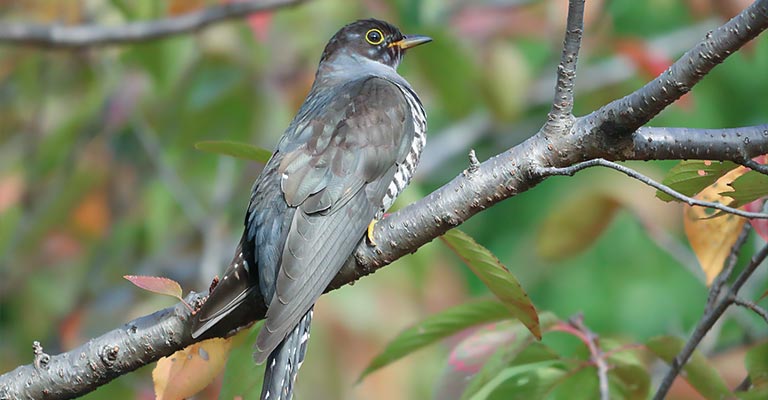
Here’s a table that showcases all the taxonomy details of the Oriental Cuckoo (Cuculus optatus):
| Taxonomic Level | Classification |
| Domain | Eukaryota |
| Kingdom | Animalia |
| Phylum | Chordata |
| Class | Aves |
| Order | Cuculiformes |
| Family | Cuculidae |
| Genus | Cuculus |
| Species | C. optatus |
The Oriental Cuckoo, scientifically known as Cuculus optatus, is classified within the avian order Cuculiformes and the family Cuculidae.
As a member of the cuckoo family, it shares lineage with other migratory and brood-parasitic birds. The genus Cuculus encompasses various cuckoo species characterized by distinct features and behaviors.
The Oriental Cuckoo’s taxonomy reflects its position in the intricate web of avian diversity, providing a basis for understanding its evolutionary relationships with other species.
This classification aids ornithologists and researchers in unraveling the bird’s biological significance and contributes to broader studies in avian taxonomy and phylogenetics.
Reproduction of Oriental Cuckoo
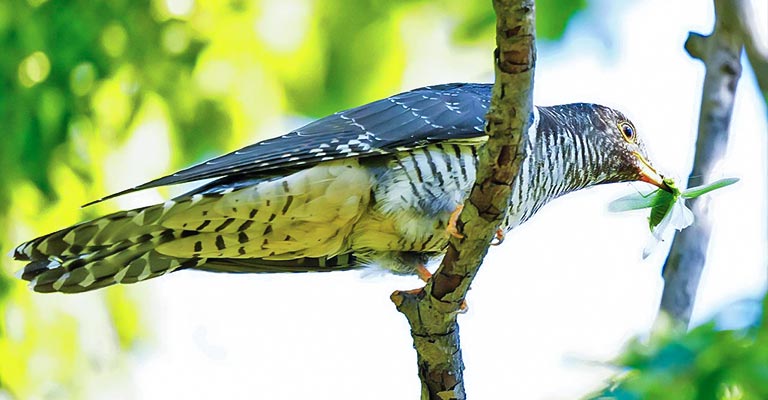
The reproduction of the Oriental Cuckoo is a fascinating aspect of its life cycle. This migratory bird employs a unique breeding strategy characterized by brood parasitism.
The female cuckoo lays her eggs in the nests of other bird species, often choosing hosts like warblers or thrushes. The mimicry extends to the egg’s appearance, resembling those of the host species.
Once the eggs hatch, the Oriental Cuckoo chick leverages its impressive ability to mimic the calls of its host’s chicks, ensuring it receives care and food from unsuspecting foster parents.
This avian trickery allows the Oriental Cuckoo to focus on its migratory journey while the unwitting host parents raise its offspring.
The intricacies of this reproductive strategy showcase the adaptability and survival instincts of the Oriental Cuckoo in diverse ecosystems across East Asia.
Oriental Cuckoo Life History
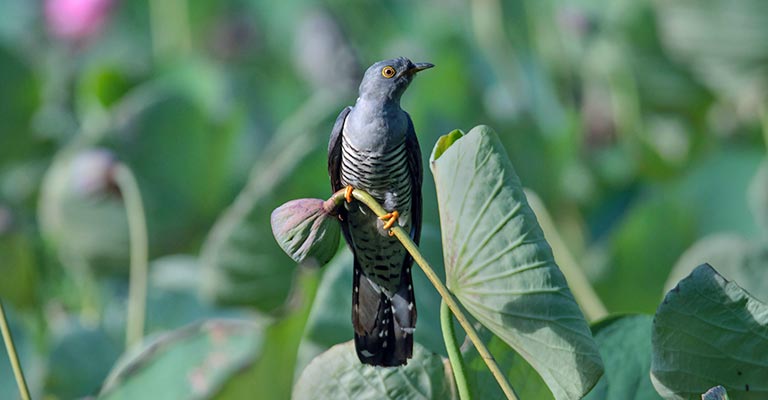
The life history of the Oriental Cuckoo (Cuculus optatus) unveils a compelling narrative of migration, clever reproductive strategies, and the intricate dance of survival in the diverse landscapes of East Asia.
From its dietary preferences to nesting behaviors and the challenges it faces, this avian species epitomizes adaptability and resilience.
Food
Oriental Cuckoos predominantly feed on a diverse diet comprising insects, caterpillars, and other small invertebrates.
During migration, they augment their nutritional intake with fruits. Their foraging habits contribute to the ecological balance, particularly in controlling insect populations.
Range Map
The Oriental Cuckoo boasts an extensive range from Siberia and Mongolia to Japan, China, and Southeast Asia. A migratory marvel, it traverses these vast distances annually, enriching ecosystems along its migratory route.
Nesting
The reproductive strategy involves brood parasitism, with the female depositing eggs in the nests of other bird species. This cunning mimicry extends to the appearance of the eggs, ensuring successful adoption by unsuspecting host parents.
| Characteristic | Details |
| Clutch Size | 1 to 4 eggs |
| Number of Broods | Typically lays one clutch per breeding season |
| Egg Length | Approximately 22-26 millimeters |
| Egg Width | Around 17-20 millimeters |
| Incubation Period | About 11-13 days |
| Nestling Period | Approximately 18-21 days |
| Nest Type | No permanent nest; eggs placed in the nests of other bird species |
| Parental Care | Limited to egg-laying; host parents care for and raise the cuckoo chicks |
| Mating System | Generally monogamous during breeding season |
Diseases
Like many avian species, Oriental Cuckoos may face disease threats, impacting their overall health. Common avian ailments such as respiratory infections or parasitic infestations can pose risks.
Treatment
Efforts to address diseases in Oriental Cuckoos involve monitoring and treating infections. Conservation initiatives often include veterinary interventions, habitat preservation, and research to understand and mitigate potential health threats.
Conservation
Conservation measures for the Oriental Cuckoo encompass habitat protection, especially critical stopover sites during migration.
Raising awareness about preserving their ecosystems contributes to broader avian conservation efforts.
The life history of the Oriental Cuckoo is a testament to the marvels of avian adaptation, emphasizing the interconnectedness of ecosystems and the importance of conservation in safeguarding this intriguing species.
Fun Facts of Oriental Cuckoo
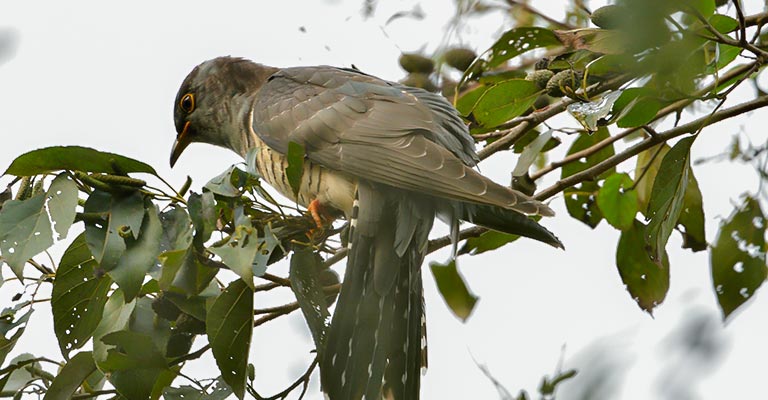
The Oriental Cuckoo (Cuculus optatus), a captivating migratory bird of East Asia, possesses many intriguing characteristics that make it a fascination among bird enthusiasts.
From its distinctive behaviors to remarkable adaptations, here are 10 fun facts that shed light on the unique aspects of the Oriental Cuckoo.
- The Oriental Cuckoo exhibits exceptional mimicry, not just in appearance but also in vocalizations. Its chicks imitate the calls of the host species, ensuring seamless integration into the host nest.
- Unlike most birds, the Oriental Cuckoo is a brood parasite, laying its eggs in the nests of other bird species. This cunning strategy frees it from the responsibilities of nest-building and chick-rearing.
- The Oriental Cuckoo embarks on an impressive migratory journey, covering thousands of kilometers annually. Its nomadic nature contributes to the bird’s widespread distribution across East Asia.
- This cuckoo species typically migrates alone rather than in flocks. The solitary journey adds an element of mystery to its migratory exploits.
- The Oriental Cuckoo undergoes a noticeable change in plumage between breeding and non-breeding seasons. Males don a striking dark glossy blue during breeding, while females exhibit a more subdued brown.
- Once the female deposits her eggs in the host nest, the Oriental Cuckoo plays a minimal role in parenting. Host parents raise the cuckoo chicks, unknowingly adopting and caring for them.
- With a diet primarily consisting of insects, caterpillars, and small invertebrates, the Oriental Cuckoo contributes to insect control, showcasing its ecological significance.
- The eggs of the Oriental Cuckoo closely resemble those of its host species, employing a clever camouflage strategy. This ensures the eggs blend seamlessly into the host nest.
- The clutch size of the Oriental Cuckoo can range from one to four eggs, providing flexibility in its reproductive strategy.
- While the Oriental Cuckoo is a migratory marvel, it only spends a limited time in each location, making its presence a fleeting and captivating spectacle for birdwatchers.
These fun facts unveil the charm and adaptability of the Oriental Cuckoo, underscoring its unique place in the avian realm.
Wrapping Up
In delving into the life history of the Oriental Cuckoo, we uncover a tapestry woven with unique adaptations, from its mimicry in nesting to the arduous migratory journeys undertaken.
The intricacies of its reproductive strategies, foraging habits, and the challenges it faces highlight the resilience of this avian marvel.
As we unravel the secrets of the Oriental Cuckoo’s existence, it becomes apparent that its story contributes to the broader understanding of avian biology and underscores the delicate balance of ecosystems in East Asia.
Preserving the habitats crucial to its survival becomes paramount, emphasizing the interconnectedness of all living beings in the intricate web of nature.